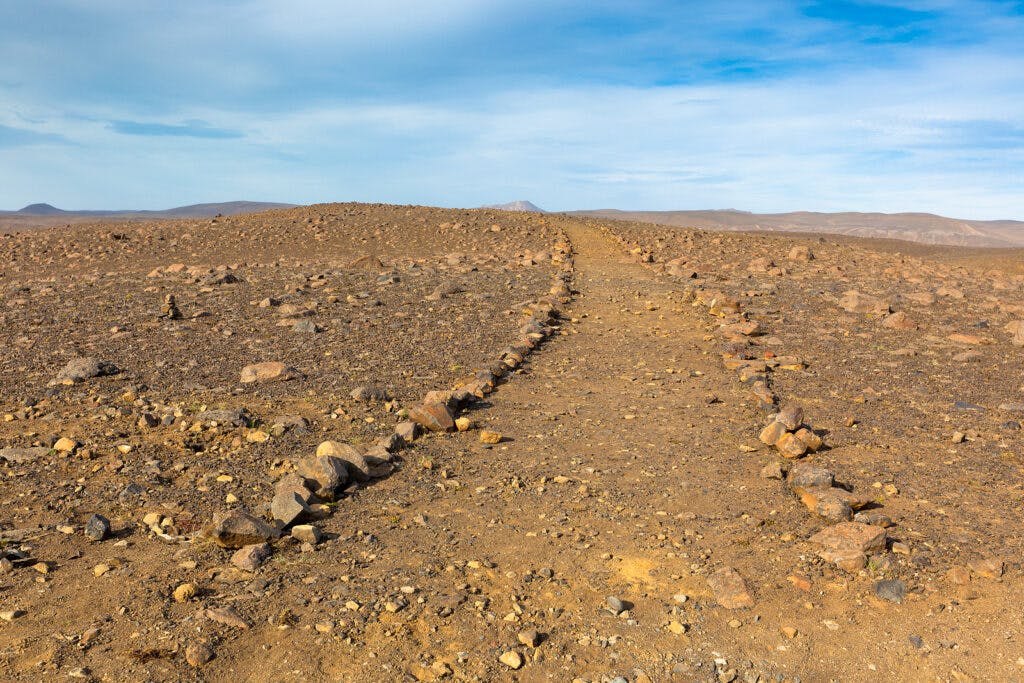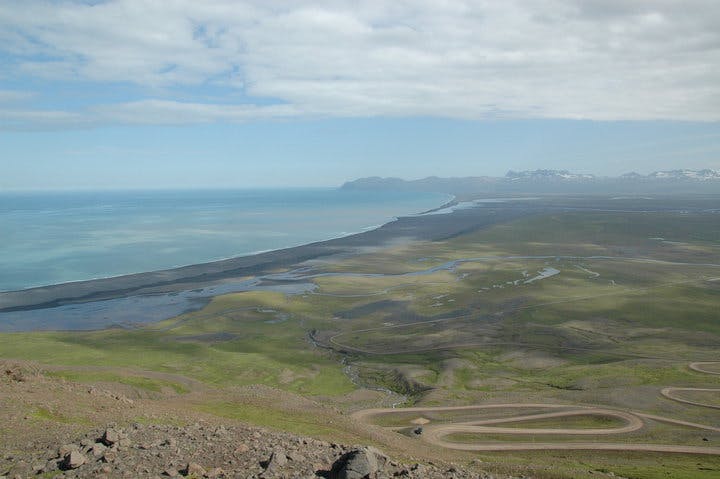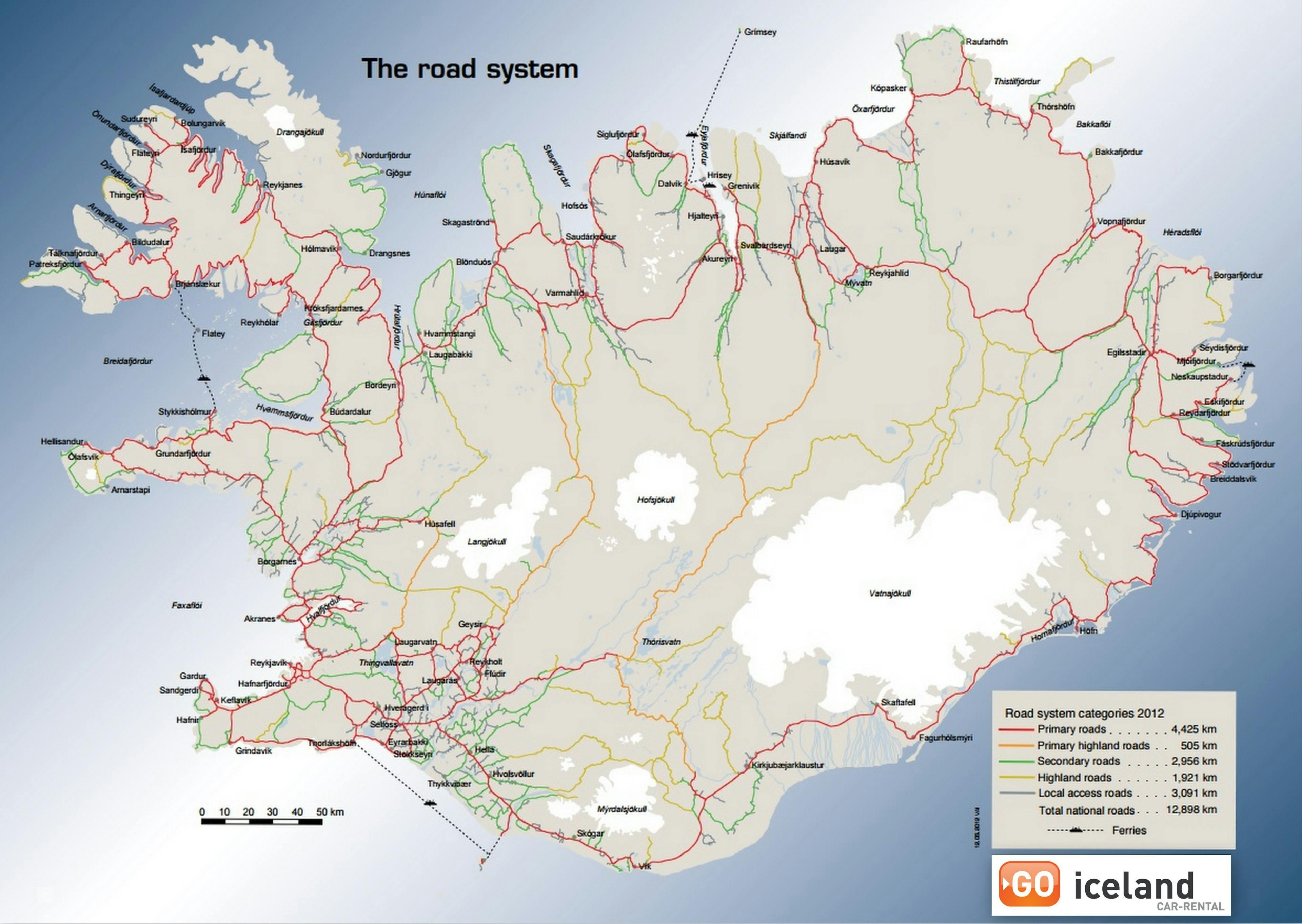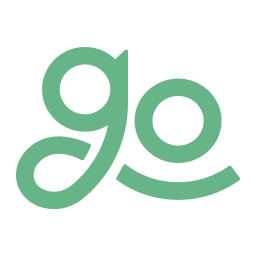Loading...
October 29, 2025
Your Guide to Navigating Iceland’s Roads
While driving around Iceland, you will drive on many types of roads. The roads in Iceland are categorized into four different groups:
National roads
Municipal roads
Public paths
Private roads
In this guide, we’ll take a close look at Iceland’s roads in order to help you understand what to expect while traveling around the island. Having a solid knowledge of Iceland’s road systems can help you avoid confusion and potential speeding and parking fines on your trip, so it’s important to know how these types of roads differ.

Types of National Roads of Iceland
National roads in Iceland are open to everyone and are free to travel on. There are no tolls in Iceland except for some tunnels where you will have to pay a fee. The national roads are categorized into 5 different groups:
Primary roads
Iceland’s primary roads make up the core of the country’s road system. They connect all villages (with +100 inhabitants). The roads connecting the municipalities around the metropolitan area are also considered to be primary roads. In some cases, the primary road system stretches to airports and harbors, which are important for the transport of cargo as well as for tourism. Primary roads are paved and usually in good condition. During summer, primary roads are serviced and maintained so that this can be avoided during the winter when the work is more difficult to carry out. When you are passing a road crew, drive slowly by them and give them room to work.
Primary Highland roads
A part of the national road system can be found in the Highlands. At times, due to severe weather conditions in the Highlands, these roads have very limited service and are closed during winter. These gravel roads are often very rocky and narrow. If the road is marked as an F-road, your rental car agreement strictly prohibits any non-4×4 vehicle from driving on it. Most rivers up in the Highlands are unbridged, making it unsafe for smaller cars with only 2 wheel-drive. Maintain a safe speed and keep your eyes on the roads for potholes and big stones.

Highland roads
These are state roads that cannot be categorized into any of the categories mentioned above. Highland roads include roads across mountains and moors that are usually very rough and narrow. These roads are also intersected by many unbridged rivers requiring a ford crossing, so you must drive with caution. The only real difference between Highland roads and Primary Highland roads is that the former are usually narrower with even rougher terrain.
Secondary roads
Secondary roads are found outside populated areas. They connect Primary roads or Highland roads to the Primary road system. These roads can also connect small villages (100 inhabitants or less) to the Primary road system, as well as airports, harbors, ferries, national parks, and popular tourist destinations. The condition of these roads depends on where they are - the more remote, the higher the probability they receive less service and maintenance. When winter has let go of its grip, these roads are more prone to be slightly damaged, so be sure to drive with caution.

Local access roads
Local access roads in Iceland are roads to places like factories, churches, farms, public schools, and other public places located outside populated areas. A local access road can also connect a group of 30 summer houses or fewer to a secondary or primary road. These roads are usually in pretty good condition, and the speed limit is very low.
Municipal roads
Iceland’s Municipal roads are urban roads that have not been classified as highways (as per Article 8) and, as such, are managed by local municipalities and designed for unrestricted public use.
Public paths (or General paths)
Public paths, also referred to as General paths, are trails used for riding, walking, and biking, and are open to unrestricted public use. They are maintained either by state funding or are the responsibility of the municipality.
Private roads
Iceland’s private roads are roads that do not fall under the category of national or municipal roads. These are typically opened by companies, public entities, or individuals.
Map of Iceland’s Road System
If you’ve never been to Iceland, getting to grips with all these different roads and how the network is supported by each kind of road can be difficult. This map of roads in Iceland shows you where you will encounter each type of road, where they lead, and how they are connected to one another.
This map of Iceland’s roads is essential for helping you plan your trip and decide what type of car you should rent while in Iceland. Does your road trip take you through the Highlands? Then you’ll need a 4x4. Are you sticking to frequently traveled and well-maintained routes like the Golden Circle? A city car will do! Have a look at our Icelandic road map to piece it all together.

Information from www.vegagerdin.is
As of 2025, Iceland has 13,000 km of roads (8,077 miles).
Safe driving! #GoIceland

